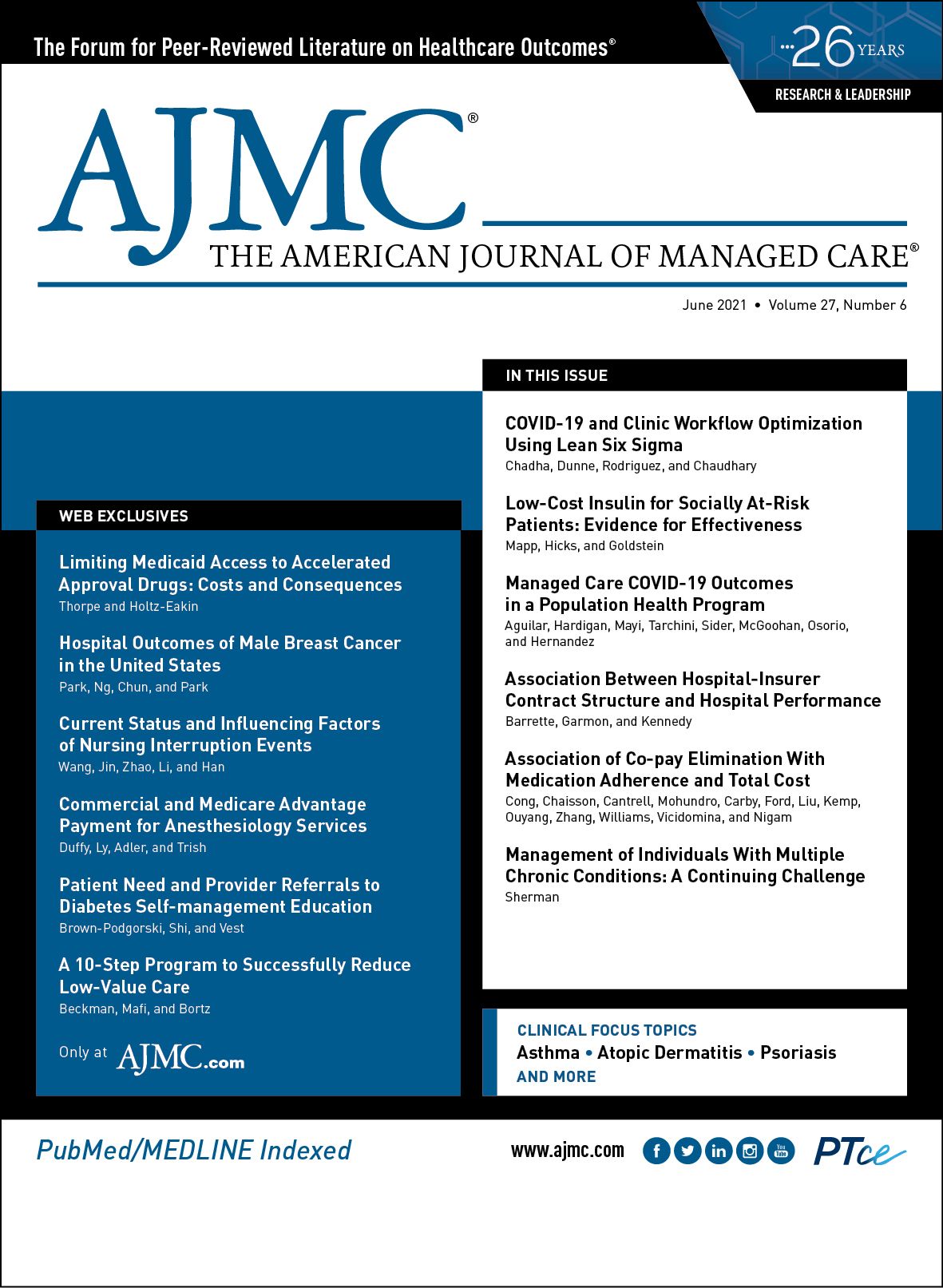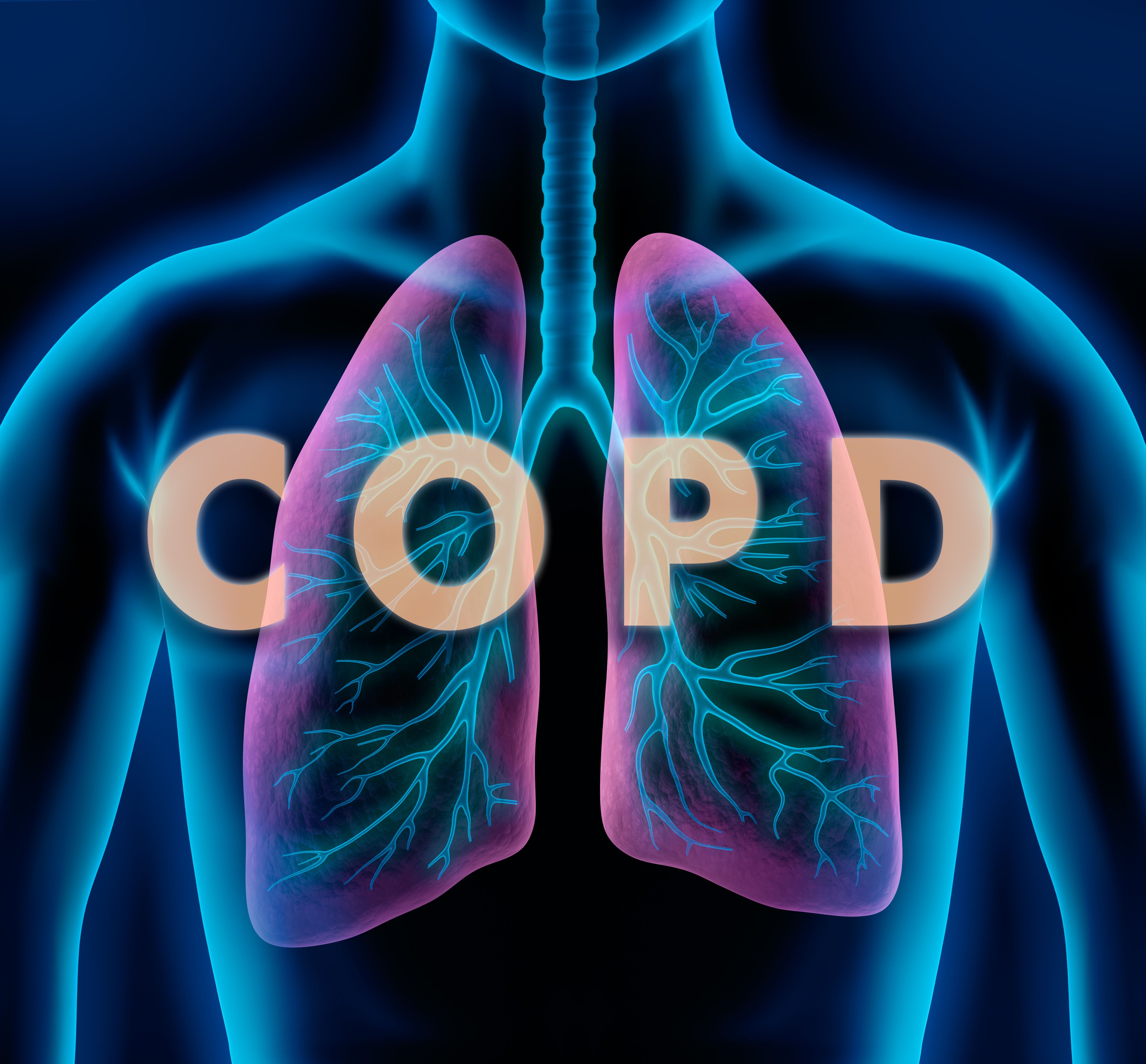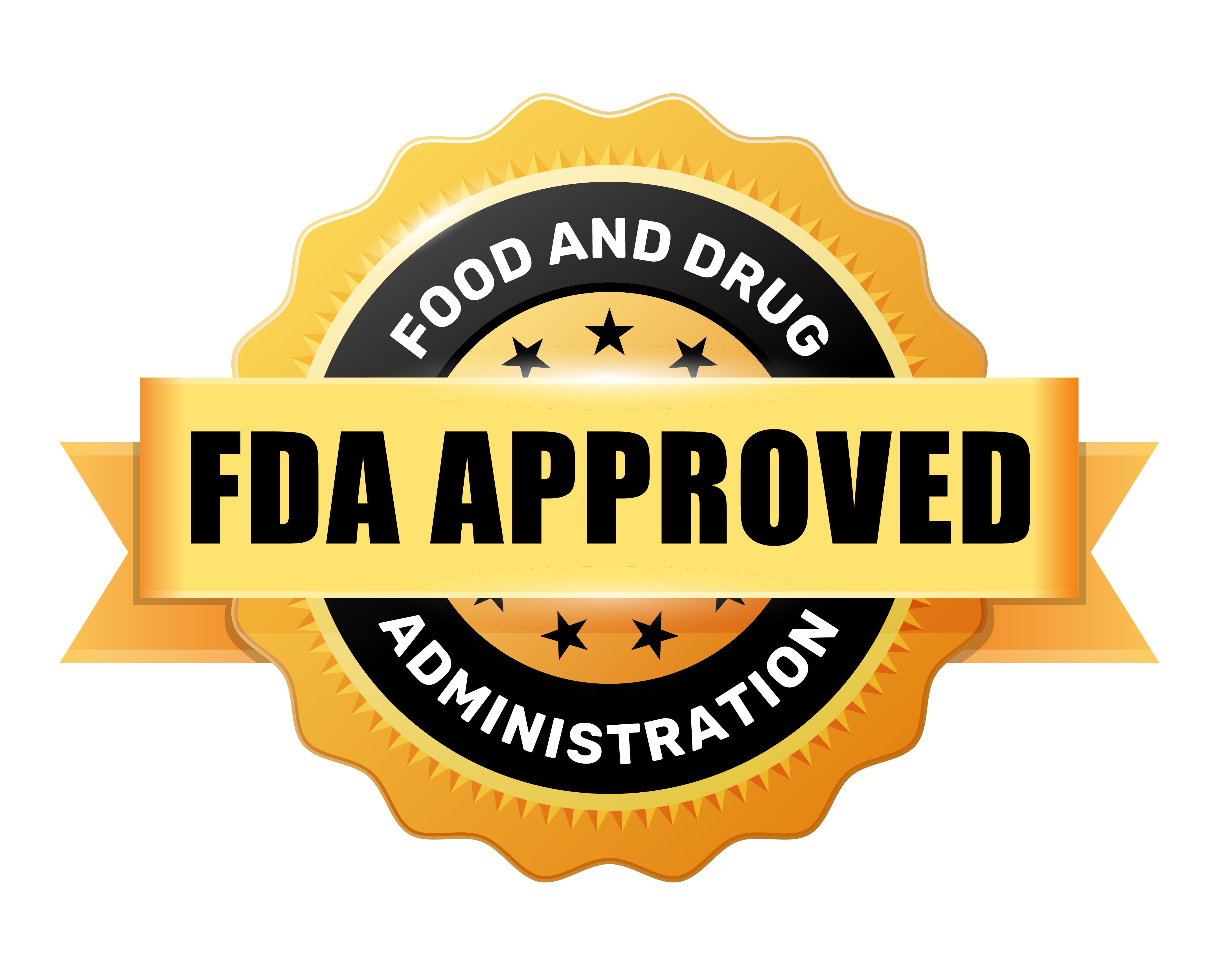Publication
Article
The American Journal of Managed Care
COVID-19 and Clinic Workflow Optimization Using Lean Six Sigma
Author(s):
The authors report an approach of outpatient clinic workflow reorganization utilizing simple, inexpensive measures to improve patient engagement and experience in addition to providing a safe setting for patients for clinic visits in the wake of COVID-19.
ABSTRACT
Objectives: The COVID-19 pandemic has fundamentally changed the workflow of clinics. We applied Lean Six Sigma processes to optimize clinic workflow to reduce patient wait times and improve the patient experience.
Study Design: Prospective cohort study.
Methods: We implemented (1) pushing most extended wait times to the end of the workflow by rooming the patient directly and (2) using distractions during the waiting process by using educational videos and a timer for physician arrival in the patient exam room. We compared the patient wait times and subcomponents of Press Ganey scores as a surrogate for changes in patient experience and satisfaction from the preimplementation period (n = 277) to the 3-month (September 1, 2020, to November 30, 2020) postimplementation period (n = 218).
Results: There was a significant reduction in overall throughput time (38 vs 35 minutes) and wait before rooming (11 vs 8 minutes), and increased physician time with patients (15 vs 17 minutes) (P < .0001 for all). These results corresponded with a significant improvement in Press Ganey subcomponents of (1) waiting time in the exam room before being seen by the care provider, (2) degree to which you were informed about any delays, (3) wait time at clinic (from arriving to leaving), and (4) length of wait before going to an exam room (P < .001 for all).
Conclusions: Simple, inexpensive measures can improve patient engagement and provide a safe setting for patients for clinic visits in the wake of COVID-19. In the future, clinics’ common wait areas could be reappropriated to increase the number of clinic exam rooms.
Am J Manag Care. 2021;27(6):225-226. https://doi.org/10.37765/ajmc.2021.88661
Takeaway Points
- The COVID-19 pandemic has fundamentally changed the workflow of clinics.
- We implemented (1) pushing longest wait times to the end of the workflow by rooming the patient directly and (2) using distractions during the waiting process by using educational videos and a timer for physician arrival in the patient exam room.
- There was a significant reduction in overall throughput time, wait before rooming, and increased physician time with patients (P < .0001 for all). These results corresponded with a significant improvement in Press Ganey subcomponents of (1) waiting time in exam room before being seen by the care provider, (2) degree to which you were informed about any delays, (3) wait time at clinic (from arriving to leaving), and (4) length of wait before going to an exam room (P < .001 for all).
Studies have shown an association between better patient experience and improved clinical outcomes of hospital readmissions, complications, and mortality.1,2 Perceptions regarding waiting time, information delivery, and expressive quality predict overall patient satisfaction, but actual waiting times do not. Providing information, projecting expressive quality, and managing waiting time perceptions and expectations may be a more effective strategy to achieve improved patient satisfaction.3 The COVID-19 pandemic has fundamentally changed outpatient clinics’ workflow. We applied Lean Six Sigma methodology to optimize our clinic’s workflow.
In this pilot project in an adult outpatient, internal medicine clinic, we sought to enhance patient engagement using the principles of (1) pushing most extended wait times to the end of the workflow by rooming the patient first and (2) using distractions during the waiting process with educational videos and a timer for physician arrival in the patient room (Figure). The data for the preimplementation period were collected from September 1, 2019, to November 30, 2019, and the postimplementation period was from September 1, 2020, to November 30, 2020. We measured the overall visit times, wait before rooming of patients, rooming time, time spent waiting for physician, and the physician’s time with the patient. To determine the effect on patient experience, we measured specific subcomponents of Press Ganey scores. All data are provided as mean (SD). All statistical analyses were performed on the commercially available SPSS Statistics 22 (IBM).
We observed significant reductions in the overall throughput time (38 [9] to 35 [4] minutes) and wait time before being roomed (11 [4] to 8 [2] minutes), and a significant increase in the time spent by the physician with the patient (15 [3] to 17 [2] minutes) when comparing the preimplementation phase (n = 277) with the postimplementation phase (n = 218) (P < .0001 for all). There were no significant differences in the time to room the patients after arrival at the clinic and the patient wait time after being roomed to the physician’s arrival in the patient room (P > .05 for both). These changes were reflected in significant improvement in the subcomponents of Press Ganey scores (preimplementation vs post implementation): (1) waiting time in exam room before being seen by the care provider (90.9% [9.4%] vs 94.8% [3.1%]), (2) degree to which you were informed about any delays (87.5% [9.4%] vs 92.0% [6.3%]), (3) wait time at clinic (from arriving to leaving) (90.4% [10.9%] vs 93.5% [5.2%]), and (4) length of wait before going to an exam room (90.3% [8.3%] vs 93.3% [6.3%]) (P < .0001 for all).
Our study resulted in an improved throughput of the outpatient clinic, increased physician time with the patient, and an associated improvement in patient experience. These findings are consistent with those of prior studies, which have shown that patient satisfaction levels are higher when patients receive information on expected waiting time.4 In the era of COVID-19, the implemented changes optimized the clinic workflow and provided a safe harbor for patients during their clinic visits with reduced risk of COVID-19 exposure in the common waiting area. In conclusion, simple, inexpensive measures implemented in our clinic led to improved patient engagement and experience. In the future, clinics’ common wait areas could be reappropriated to increase the number of clinic exam rooms.
Author Affiliations: AdvantageCare Physicians (MC, AD, NR), New York, NY; Kelley School of Business at Indiana University (MC, RC), Bloomington, IN; University of Pittsburgh Medical Center Heart and Vascular Institute (RC), Pittsburgh, PA; Mayo Clinic (RC), Rochester, MN.
Source of Funding: None.
Author Disclosures: The authors report no relationship or financial interest with any entity that would pose a conflict of interest with the subject matter of this article.
Authorship Information: Concept and design (MC, AD, RC); acquisition of data (MC); analysis and interpretation of data (RC); drafting of the manuscript (MC, RC); critical revision of the manuscript for important intellectual content (MC, AD, NR, RC); statistical analysis (RC); administrative, technical, or logistic support (MC, AD, NR); and supervision (NR, RC).
Address Correspondence to: Rahul Chaudhary, MD, MBA, Mayo Clinic, 200 First St SW, Rochester, MN 55905. Email: rahul.chaudhary.md@outlook.com.
REFERENCES
1. Doyle C, Lennox L, Bell D. A systematic review of evidence on the links between patient experience and clinical safety and effectiveness. BMJ Open. 2013;3(1):e001570. doi:10.1136/bmjopen-2012-001570
2. Manary MP, Boulding W, Staelin R, Glickman SW. The patient experience and health outcomes. N Engl J Med. 2013;368(3):201-203. doi:10.1056/NEJMp1211775
3. Thompson DA, Yarnold PR, Williams DR, Adams SL. Effects of actual waiting time, perceived waiting time, information delivery, and expressive quality on patient satisfaction in the emergency department. Ann Emerg Med. 1996;28(6):657-665. doi:10.1016/s0196-0644(96)70090-2
4. Mowen JC, Licata JW, McPhail J. Waiting in the emergency room: how to improve patient satisfaction. J Health Care Mark. 1993;13(2):26-33.






